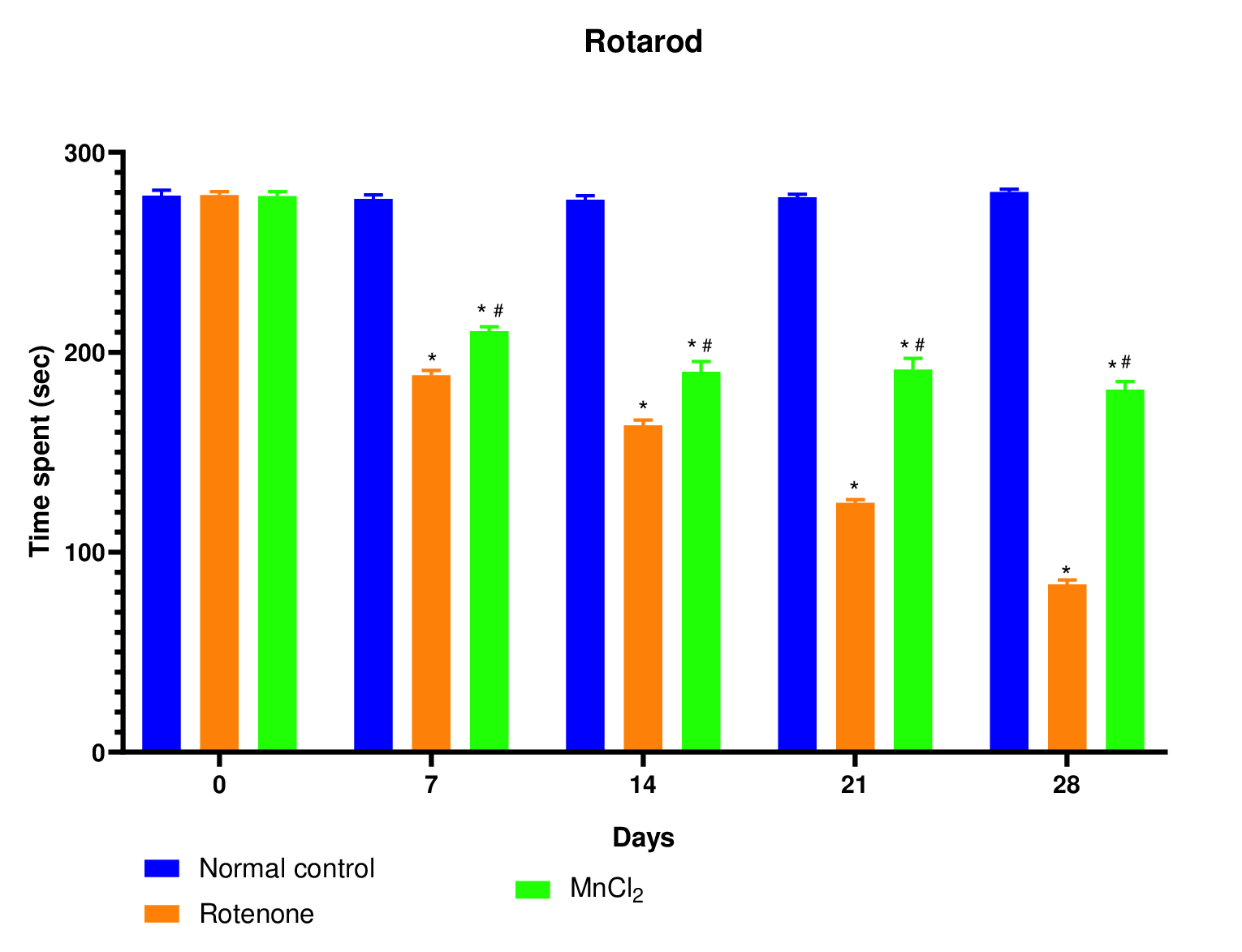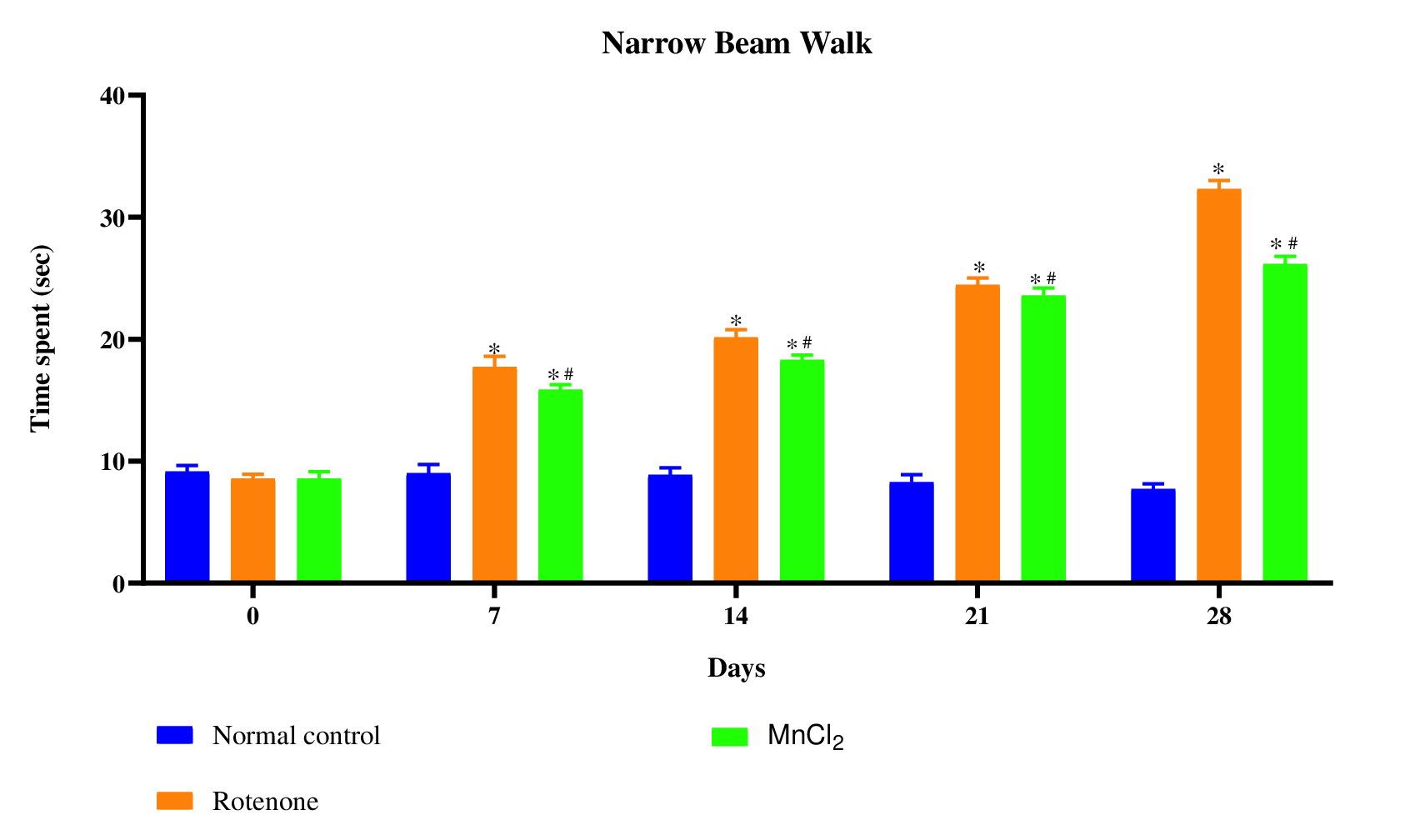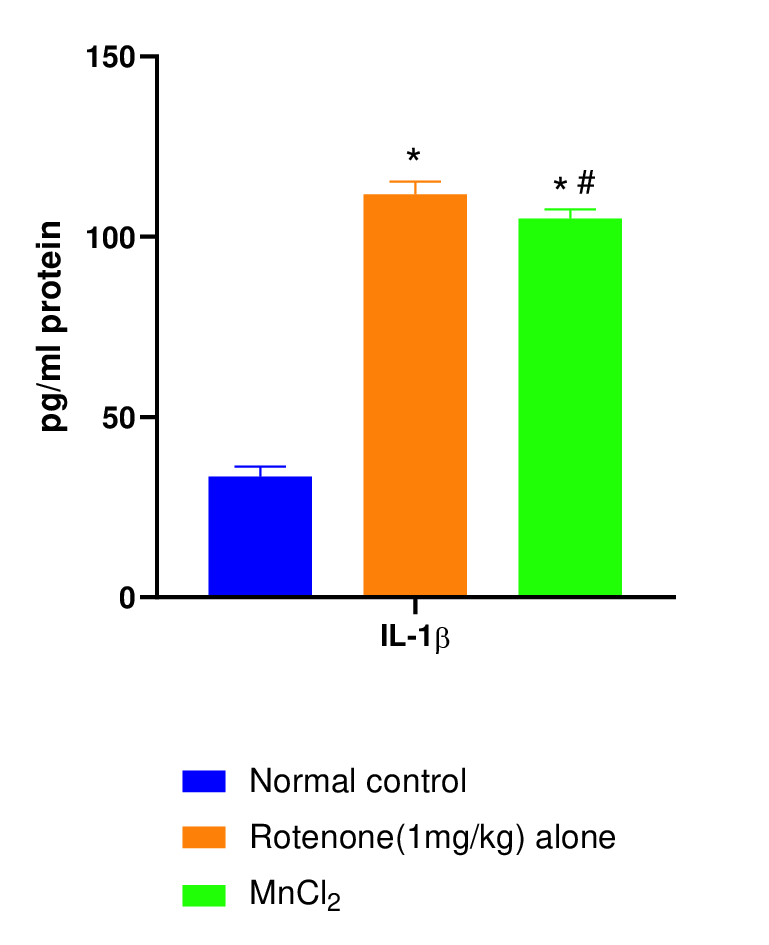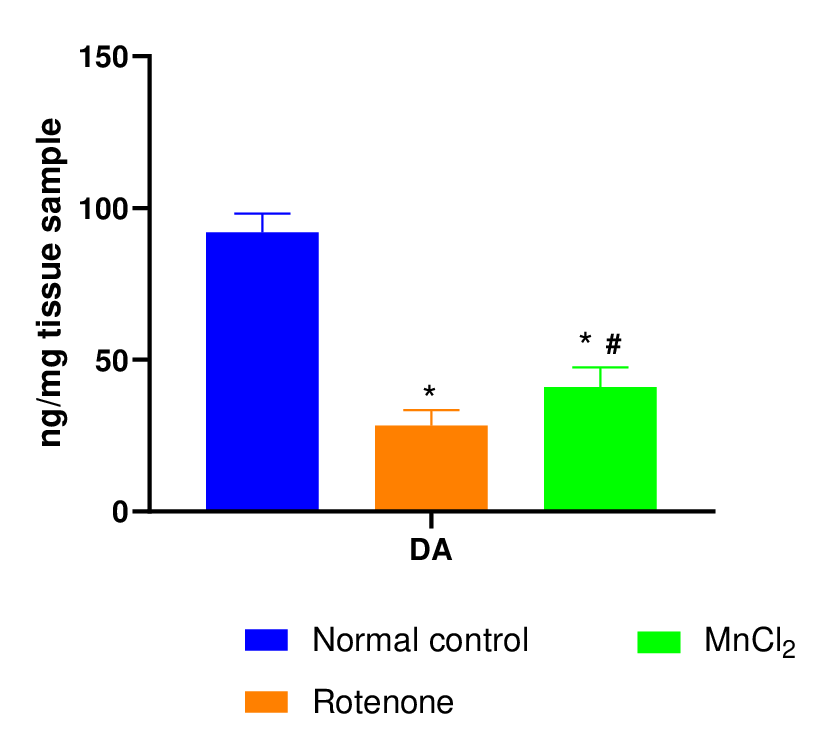Category: Parkinsonism, Others
Objective: To evaluate the Parkinsonism mimicking potential of MnCl2 in an experimental rat model.
To compare the destructive effect of MnCl2 with rotenone by performing behavioral, biochemical, and molecular parameters.
Background: Utilization of laboratory animals in pre-clinical research holds significance in advancing understanding of complexity of diseases, evaluating therapeutic interventions, and ensuring treatment safety before translation to clinical trials. Therefore, the responsible use of laboratory animals is essential. In the contemporary context, we evaluated the potential of Manganese (Mn), an alternative to rotenone, to induce Parkinsonism in laboratory animals. Among the numerous animal models available, rotenone has been widely utilized to mimic key aspects of Parkinsonism in experimental animals. However, concerns regarding animal mortality, cost-effectiveness, and experimental safety have prompted an investigation into alternative models. This study aimed to compare the Parkinsonism inducing effect of Mn with rotenone, with a particular focus on animal welfare and practical considerations. Mn-induced neurotoxicity share common pathological pathways and symptoms with rotenone as both reported to inhibit mitochondrial complexes.
Method: Experimental animals (Adult Wistar rat) were divided into 3 groups (5 animals in each). Dose administered to normal control (saline 1ml/kg i.p.), rotenone (1mg/kg i.p.), MnCl2 (15mg/kg i.p.) for 28 days. Behaviour analysis (Rotarod and Beam walk test) was done at 1st, 7th, 14th, 21st and 28th day of experiment. On 29th day, the animals were sacrificed and biochemical, neuroinflammatory marker, and neurotransmitter level were accessed.
Results: The outcome stipulates that 28 days exposure to Mn gradually alleviated motor coordination and grip strength. Moreover, the level GSH were also found to be decrease. The elevated level of IL-1ß was observed by the ELISA test. The concentration of dopamine was reduced in the brain homogenate detected by RP-HPLC.
Conclusion: The study comes to an end that Mn can be potential chemical used to induce Parkinsonism in alternative to rotenone with lesser mortality rate because of more LD-50 value of Mn.
Fig 1: Rotarod test
Fig 2: Narrow beam walk test
Fig 3: IL-1Beta
Fig 4: Dopamine estimation
To cite this abstract in AMA style:
S. Chib. Manganese-induced Parkinsonism Vs Rotenone-induced Parkinsonism: Animal Life Matters! [abstract]. Mov Disord. 2024; 39 (suppl 1). https://www.mdsabstracts.org/abstract/manganese-induced-parkinsonism-vs-rotenone-induced-parkinsonism-animal-life-matters/. Accessed April 3, 2025.« Back to 2024 International Congress
MDS Abstracts - https://www.mdsabstracts.org/abstract/manganese-induced-parkinsonism-vs-rotenone-induced-parkinsonism-animal-life-matters/




